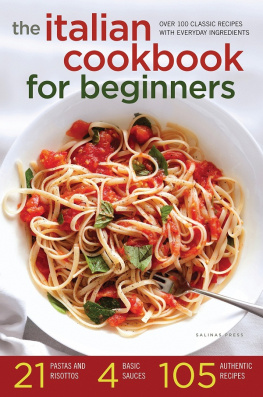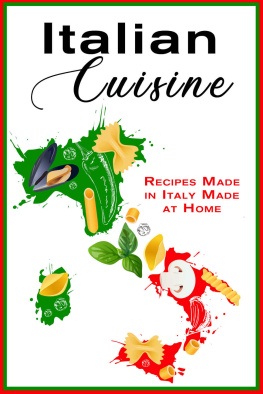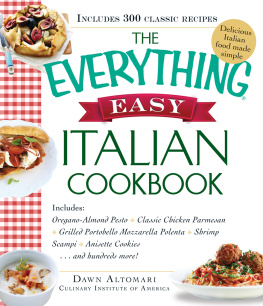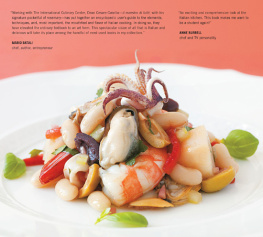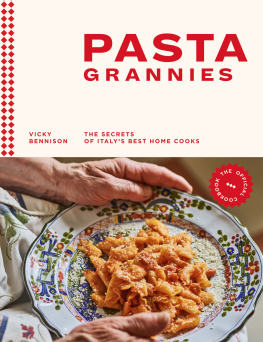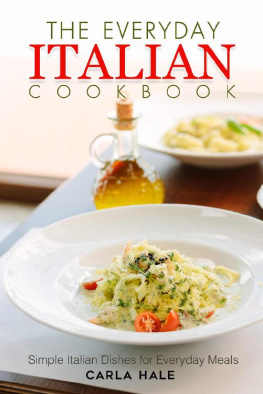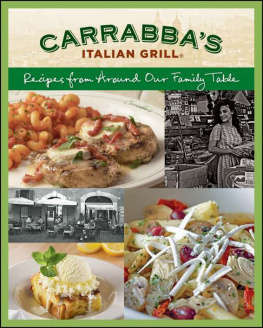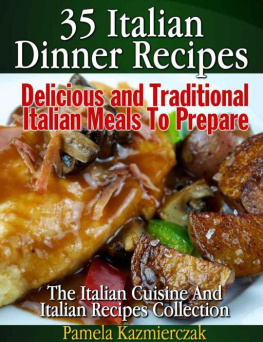

Copyright 2019 by Rockridge Press, Emeryville, California
No part of this publication may be reproduced, stored in a retrieval system or transmitted in any form or by any means, electronic, mechanical, photocopying, recording, scanning or otherwise, except as permitted under Sections 107 or 108 of the 1976 United States Copyright Act, without the prior written permission of the Publisher. Requests to the Publisher for permission should be addressed to the Permissions Department, Rockridge Press, 6005 Shellmound Street, Suite 175, Emeryville, CA 94608.
Limit of Liability/Disclaimer of Warranty: The Publisher and the author make no representations or warranties with respect to the accuracy or completeness of the contents of this work and specifically disclaim all warranties, including without limitation warranties of fitness for a particular purpose. No warranty may be created or extended by sales or promotional materials. The advice and strategies contained herein may not be suitable for every situation. This work is sold with the understanding that the publisher is not engaged in rendering medical, legal or other professional advice or services. If professional assistance is required, the services of a competent professional person should be sought. Neither the Publisher nor the author shall be liable for damages arising herefrom. The fact that an individual, organization or website is referred to in this work as a citation and/or potential source of further information does not mean that the author or the Publisher endorses the information the individual, organization or website may provide or recommendations they/it may make. Further, readers should be aware that Internet websites listed in this work may have changed or disappeared between when this work was written and when it is read.
For general information on our other products and services or to obtain technical support, please contact our Customer Care Department within the U.S. at (866) 744-2665, or outside the U.S. at (510) 253-0500.
Rockridge Press publishes its books in a variety of electronic and print formats. Some content that appears in print may not be available in electronic books, and vice versa.
TRADEMARKS: Rockridge Press and the Rockridge Press logo are trademarks or registered trademarks of Callisto Media Inc. and/or its affiliates, in the United States and other countries, and may not be used without written permission. All other trademarks are the property of their respective owners. Rockridge Press is not associated with any product or vendor mentioned in this book.
Interior and Designer: Merideth Harte
Photo Art Director: Amy Hartmann
Editor: Kim Suarez
Production Editor: Andrew Yackira
Photography: Photography 2018 Darren Muir. Food styling by Yolanda Muir.
: Wicked Shots Photography
Illustrations: Merideth Harte
ISBN: Print 978-1-64152-307-3 | eBook 978-1-64152-308-0

To my mom, Celeste, who never tires of me asking how-to cooking questions. And to my sister, Roseanne, who always insisted that I write a cookbook. Thank you for the support!

CONTENTS
Hello!
I was born in Italy and, as my luck would have it, into a family that valued home cooking and family meals. From an early age I was welcomed into the kitchen. This is not so unusual in Italy; in fact, its very much the norm. While my mom was the primary cook, my dad had a small business as a greengrocer, so both parents really instilled an appreciation for fresh ingredients, home-cooked meals, and family time. We were surrounded by loved ones at the table, and discussions frequently flowed around what we would be having at our next meal! Its not surprising that my most beloved memories of growing up in Italy are an appreciation of food and family.
Home Is Where the Heart Is
Home cooking is very much a part of daily life in Italy. Far more than just another daily chore, cooking, and ultimately sharing meals with family and friends, is always cause for celebration for Italians. Family meals occur dailynot just on distinct holidays or special occasions. Families use mealtime as a way to catch up and discuss the days activities over a delicious meal. Italians love home cooking, and while Italy doesnt lack for great restaurants, far more meals are eaten at home than out. Ask any Italian where their favorite place to eat is, and their response will likely be my mothers!
Italian cooking is very seasonal, and many ingredients, especially vegetables, are rarely eaten out of season. Zucchini, green beans, eggplants, and tomatoes are the kings of the summer season, while broccoli and broccoli rabe, cauliflower, potatoes, and mushrooms are more widely used in fall and winter months. Italian cooking is known for its simplicity and ease of preparation, and many dishes contain only a handful of major ingredients. Italian cooking relies on quality and freshness rather than processed and convenient or complex and elaborate.
A Regional Cuisine
In addition to being seasonal, Italian cuisine is very much regional. A dish thats commonplace in southern Italy may be relatively unheard of in northern Italy. We would be hard pressed to find one dish that is prepared the same way throughout the country. The 20 regions of Italy make use of what they have most readily available, which makes sense given the emphasis on freshness and using local ingredients as much as possible.
With miles and miles of olive trees, southern Italys fat of choice is olive oil, and people rarely use butter for cooking. Northern Italians, however, do use butter and cream in cooking heavier sauces and dishes. Surrounded by the Ionian, Tyrrhenian, and Mediterranean seas, Sicily boasts a hefty repertoire of seafood dishes, while regions such as Tuscany thrive on meats, especially wild boar and beef. Chianina , for example, is a local breed of cattle used to make the famous Florentine steaks. Pasta is another example of regional contrasts. Stuffed pasta such as tortellini and ravioli and specialties like egg tagliatelle are commonplace in the northern city of Bologna; however, southern Italians tend to prepare homemade pasta with just durum wheat flour and water.
Less Is Always More
When it comes to authentic Italian cooking, the quality of ingredients far outweighs quantity. Traditional Italian recipes dont call for a laundry list of miscellaneous ingredients; instead youll find carefully selected items that complement each dish in a meaningful way. Each ingredient adds something of value to the dish, be it flavor, texture, or sustenance. As such, its easy to prepare dishes with five main ingredients or fewer, as everything used offers maximum flavor. Seasonality is key, as is freshness.
Italian American dishes, on the other hand, frequently call for adding heavy sauces and using lots of garlicfar more than is actually used in Italy. Everything appears to be topped off with grated cheese. Salads are dressed with dressings, as opposed to extra-virgin olive oil and some red wine vinegar. Indeed, in Italy some of these ingredients are used, but they are not used to the extent that we in the United States think they are. Weve grown accustomed to using these flavor enhancements, and have come to call any dish Italian that uses them. While these dishes may be Italian inspired, and perhaps no less delicious than authentic Italian food, they may not be what Italian cooks prepare at home. In the United States, sometimes we have a tendency to add ingredients just because. Im happy to show you that less is always more when it comes to home-style cooking in Italy.
Next page

